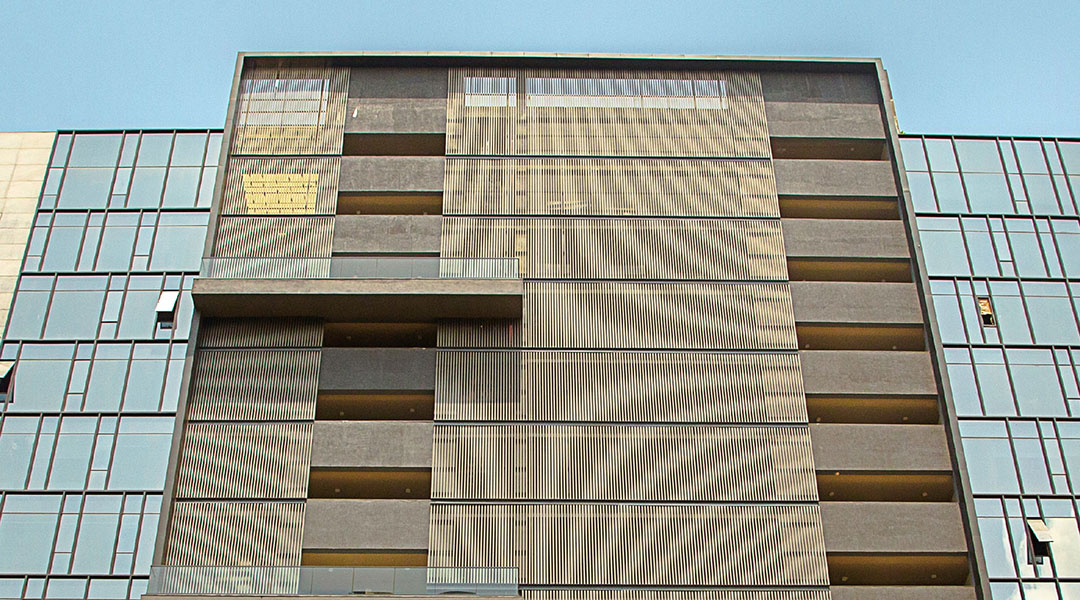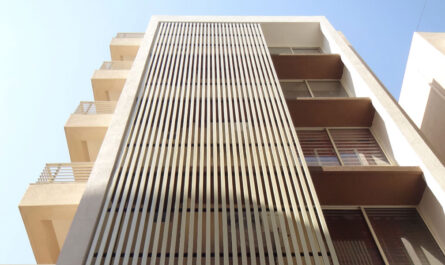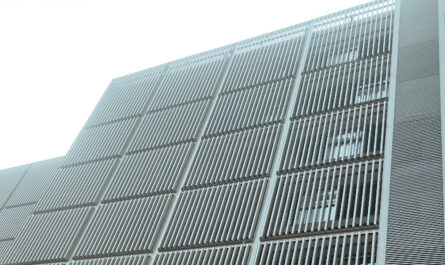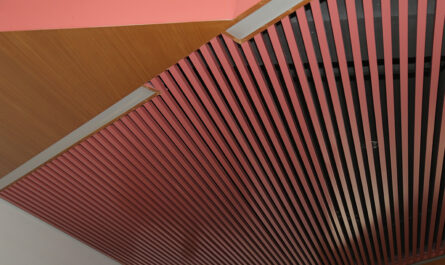Exterior louvres have become essential architectural elements that enhance building aesthetics while providing practical benefits such as sun shading, privacy, and ventilation control. The performance, durability, and appearance of exterior louvres are significantly influenced by the materials used in their construction. This comprehensive guide explores the various materials commonly employed in exterior louvres, analyzing their advantages and disadvantages to help architects, building owners, and contractors make informed decisions. From traditional wood to innovative composites, this article provides valuable insights into selecting the right material for your exterior louvre project.
Section 1: Aluminum Exterior Louvres
1.1 Properties and Characteristics
Aluminum stands as one of the most popular materials for exterior louvres due to its exceptional balance of performance characteristics. Lightweight yet structurally strong, aluminum offers excellent corrosion resistance, particularly when properly anodized or powder-coated. Its malleability allows for intricate designs and profiles, enabling architects to achieve both functional requirements and aesthetic goals. With a density approximately one-third that of steel, aluminum louvres impose minimal structural load while maintaining impressive span capabilities.
1.2 Advantages of Aluminum Louvres
The advantages of aluminum extend beyond its physical properties. Its exceptional durability in various climates makes it suitable for installations worldwide, from coastal environments to urban settings. Aluminum’s inherent resistance to UV degradation ensures color stability and structural integrity over decades of exposure. Maintenance requirements are minimal, typically limited to occasional cleaning with mild detergents. Perhaps most appealing to modern construction is aluminum’s sustainability profile—it’s 100% recyclable without loss of properties, and recycled aluminum requires only 5% of the energy needed to produce primary aluminum.
1.3 Limitations and Considerations
Despite its many benefits, aluminum louvres have some limitations. Thermal conductivity is higher than other materials, potentially creating thermal bridging issues if not properly designed with thermal breaks. The initial cost exceeds that of some alternatives like vinyl, though this is often offset by longer lifespan and reduced maintenance. In marine environments, special coatings or marine-grade alloys may be necessary to prevent galvanic corrosion, adding to project costs. Additionally, the manufacturing process has higher embodied energy compared to natural materials, though this impact is mitigated when using recycled content.
Section 2: Timber Exterior Louvres
2.1 Natural Aesthetics and Performance
Timber louvres offer unparalleled natural beauty and warmth that many architectural designs seek to incorporate. The unique grain patterns and organic texture of wood create visual interest that manufactured materials struggle to replicate. Various timber species provide different aesthetic and performance characteristics, from the rich reddish tones of cedar to the golden hues of teak. Wood also offers excellent thermal properties, with significantly lower thermal conductivity than metals, reducing heat transfer through the building envelope.
2.2 Benefits of Timber Louvres
Beyond aesthetics, timber louvres offer several practical benefits. Wood naturally absorbs and releases moisture, helping to regulate humidity levels near the building envelope. This hygroscopic property can contribute to more stable interior conditions. Timber from sustainably managed forests represents a renewable resource with lower embodied carbon than many alternatives, particularly when sourced locally. Modern engineering and treatment methods have significantly improved the dimensional stability and resistance properties of timber louvres, expanding their application potential.
2.3 Drawbacks and Maintenance Requirements
The primary challenges with timber louvres involve maintenance and durability concerns. Without proper treatment and regular maintenance, wood is susceptible to moisture damage, warping, cracking, and biological attacks from insects and fungi. Even with protective treatments, timber louvres typically require refinishing every 2-5 years, depending on exposure conditions. The frequency and cost of this maintenance must be considered in lifecycle cost analyses. Additionally, fire resistance is naturally lower than non-combustible alternatives, though treatments can improve performance in this regard.
Section 3: Steel Exterior Louvres
3.1 Strength and Structural Performance
Steel offers unmatched structural strength among common louvre materials, enabling wider spans and more minimalist profiles where desired. This exceptional strength allows designers to create dramatic cantilevers or support significant wind loads with minimal visible structure. High tensile strength makes steel particularly suitable for regions with extreme weather conditions, including hurricane zones. Additionally, steel’s high elastic modulus results in minimal deflection under load, maintaining both performance and appearance over time.
3.2 Advantages in Commercial Applications
Commercial applications often benefit from steel louvres’ superior fire resistance ratings, which can contribute to overall building safety strategies. The precision manufacturing possible with steel allows for tight tolerances and excellent integration with other building systems. Modern galvanizing and coating technologies have dramatically improved corrosion resistance, extending service life in demanding environments. Steel’s durability translates to exceptional longevity, with properly maintained systems often lasting 50+ years, making it attractive for institutional and landmark buildings.
3.3 Challenges and Limitations
Despite its strengths, steel presents several challenges for exterior louvre applications. Its high density results in significantly greater weight than aluminum or composites, requiring more substantial supporting structures and potentially increasing installation complexity. Corrosion remains a concern, particularly at cut edges and connection points, necessitating comprehensive protective systems. Thermal conductivity is extremely high, creating potential energy efficiency issues if not addressed through thermal breaks. Initial costs are typically higher than many alternatives, though the long-term durability can offset this investment over the building lifecycle.
Section 4: Composite and Engineered Materials
4.1 Evolution of Composite Louvre Materials
The development of advanced composites has revolutionized exterior louvre options in recent years. Fiber-reinforced polymers (FRP), wood-plastic composites (WPC), and other engineered materials combine the advantageous properties of multiple base materials while minimizing their drawbacks. These composites typically feature a polymer matrix reinforced with fibers (glass, carbon, natural) or particles to enhance mechanical properties. Manufacturing techniques allow precise control over material composition, optimizing performance for specific applications and environments.
4.2 Performance Benefits and Versatility
Composite louvres offer exceptional resistance to environmental degradation, including moisture, UV radiation, and biological attack. Many formulations provide excellent dimensional stability with minimal thermal expansion, maintaining proper operation and appearance across temperature extremes. Weight advantages are significant, with most composites being lighter than metals while offering comparable strength characteristics. Design flexibility is another key benefit, as composites can be molded, extruded, or formed into complex shapes and profiles that would be difficult or impossible with traditional materials.
4.3 Considerations and Emerging Developments
While composites offer impressive performance, several considerations warrant attention. Long-term performance data is still limited for newer formulations, creating some uncertainty about actual service life in various environments. Initial costs typically exceed traditional materials, though reduced maintenance requirements often improve lifecycle economics. Environmental considerations are complex, as many composites are not easily recyclable at end-of-life, though emerging bio-based formulations are addressing this concern. Fire performance varies widely between different composite systems, requiring careful specification to meet building code requirements.
Section 5: Alternative and Specialized Materials
5.1 Glass and Glazed Louvres
Glass louvres represent a specialized option that combines light transmission with solar control. Tinted, fritted, or low-E coated glass can be incorporated into louvre systems to manage solar gain while maintaining views and admitting filtered daylight. These systems are particularly valuable in applications where maintaining a visual connection between interior and exterior is important. Advances in glass technology have expanded options to include photovoltaic integration, switchable opacity glass, and highly insulating multi-layer assemblies.
5.2 Terracotta and Ceramic Systems
Architectural terracotta and ceramic louvres offer distinctive aesthetic qualities combined with excellent durability. These materials have been used in buildings for millennia, proving their longevity in various climates. Modern manufacturing methods have improved dimensional precision and structural capabilities while maintaining the rich, earthy appearance that makes terracotta distinctive. The inherent thermal mass of ceramic materials can contribute to building energy performance, while the natural colors remain stable without requiring coatings or finishes.
5.3 Innovative and Sustainable Options
The push for sustainable building materials has spurred innovation in exterior louvre materials. Recycled content options now include louvres made from reclaimed ocean plastics, post-consumer metals, and industrial by-products. Rapidly renewable materials like bamboo are being engineered for exterior applications through densification and stabilization processes. Emerging bio-composites utilize agricultural waste fibers in bio-based polymer matrices, creating materials with significantly lower embodied carbon than conventional alternatives while maintaining necessary performance characteristics.
Section 6: Material Selection Factors and Decision Matrix
6.1 Climate and Environmental Considerations
Material selection should begin with a thorough assessment of the installation environment. Coastal locations with salt spray, high humidity regions, areas with extreme temperature variations, and polluted urban environments each present unique challenges. A material that performs excellently in one climate may fail prematurely in another. Performance metrics such as corrosion resistance ratings, moisture absorption, UV stability, and thermal expansion coefficients should be evaluated against local conditions to ensure appropriate selection.
6.2 Aesthetic Requirements and Design Integration
The visual impact of exterior louvres often plays a crucial role in material selection. Consideration should be given to color stability, texture, profile options, and how the material complements other building elements. Some materials offer wider customization options, while others provide distinctive character that becomes a defining feature of the building. The desired level of visual prominence—whether the louvres should stand out as a design feature or blend subtly with the façade—will influence material choice.
6.3 Lifecycle Cost Analysis and Sustainability Metrics
A comprehensive evaluation should include not only initial material and installation costs but also maintenance requirements, expected service life, and end-of-life considerations. Materials with higher upfront costs often prove more economical when analyzed over a 30-50 year building lifespan. Sustainability factors to consider include embodied carbon, recycled content percentage, regional availability to reduce transportation impacts, recyclability, and contribution to building energy performance. These factors should be weighted according to project-specific sustainability goals and requirements.
Conclusion
The selection of materials for exterior louvres represents a critical decision that impacts building performance, aesthetics, maintenance requirements, and environmental footprint. Each material offers a distinct profile of advantages and limitations that must be carefully evaluated against project-specific requirements and constraints. As building technology continues to evolve, new material options and hybrid systems emerge, expanding the possibilities for designers and building owners. By understanding the characteristics and performance parameters of different louvre materials, stakeholders can make informed decisions that optimize both short-term and long-term outcomes, creating buildings that are not only visually striking but also functionally superior and environmentally responsible.
FAQs
How does material choice affect the long-term maintenance costs of exterior louvres?
Material selection significantly influences maintenance requirements and associated costs. Aluminum and composites typically require minimal maintenance—primarily periodic cleaning—while timber demands regular refinishing to maintain appearance and protect against decay. Steel necessitates vigilant inspection for corrosion, particularly at joints and connections. Over a 20-year period, maintenance costs for timber louvres can exceed the initial installation cost, while high-quality aluminum systems might incur less than 10% of initial costs in maintenance expenses.
Which louvre materials offer the best environmental sustainability profile?
Sustainability must be evaluated across multiple metrics, including embodied carbon, recyclability, and service life. Responsibly sourced timber has the lowest embodied carbon but requires proper forest management certification. Aluminum with high recycled content offers excellent lifecycle performance due to its durability and 100% recyclability. Newer bio-based composites show promising environmental profiles but have less proven longevity. For optimal sustainability, match material selection to the expected building lifespan and local environmental conditions to avoid premature replacement.
Can different materials be combined in a single exterior louvre system?
Yes, hybrid systems that combine multiple materials are increasingly common, leveraging the advantages of each component. Examples include aluminum frames with timber infill slats, composite structural elements with glass louvre blades, or steel supporting structures with lightweight aluminum louvres. These combinations can optimize performance, reduce weight, enhance aesthetics, or improve thermal performance. However, careful detailing is essential to address different thermal expansion rates and potential galvanic reactions between dissimilar metals.
How do various louvre materials perform in fire safety scenarios?
Fire performance varies significantly between materials. Steel and aluminum are non-combustible, though aluminum will lose structural integrity at lower temperatures than steel. Timber is combustible but can be treated with fire retardants to improve performance. Composites show wide variation—some meet stringent fire ratings while others present significant fire risks. Glass louvres typically shatter under extreme heat but may be specified with fire-resistant ratings when required. Always verify compliance with local building codes, particularly for high-rise or public buildings with stringent fire safety requirements.
What innovations in louvre materials can we expect in the coming years?
Material innovation continues to accelerate, with several promising developments on the horizon. These include self-cleaning surfaces using hydrophobic nanotechnology, color-changing materials that respond to temperature to optimize solar gain, integrated photovoltaic elements that generate electricity while providing shade, and smart materials that change properties in response to environmental conditions. Additionally, advanced computational design is enabling more efficient use of materials through biomimetic structures that maximize performance while minimizing material usage.




